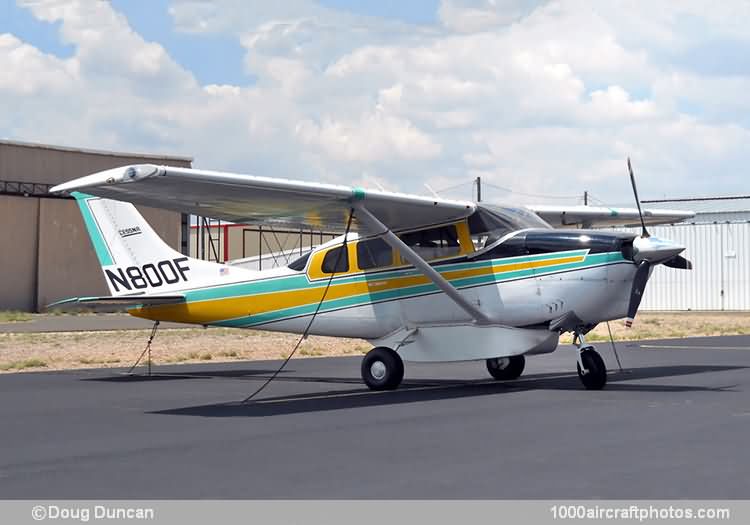The 115 cu.ft (3.25 cu.m) cabin accommodated six people in individual seats with reclining backs. There was a 6 in (15 cm) gap between the center pair of seats and the floor was recessed behind them for additional foot room. The cabin offered a 360° field of vision. In addition to the usual door on each side, there was a third large door on the port side for easy access to the two rear seats or to the cargo area when these seats were removed. All seats folded forward to facilitate loading and were quickly removable. A baggage compartment and shelf were located behind the rear seats.
Radio and electronic equipment were carried in the nose, forward of the nose wheel unit of the non-retractable landing gear. Oversize tires for all three wheels were offered as optional extras, in addition to a full range of optional equipment offered in previous models.
Power plant of the Cessna 205 was the 260 hp Continental IO-470-S six-cylinder horizontally-opposed air-cooled engine, driving a two-blade constant-speed propeller, diameter 6 ft 10 in (2.08 m). The standard fuel capacity of 65 gal (246 l) could be increased to 84 gal (318 l) by fitting optional long-range tanks.
FAA Type Approval was received under the designation Cessna 210-5 (also listed in the Type Certificate as Cessna 210J) on June 14, 1962, and deliveries began in August, 1962. After 480 production Cessna 205s (c/n 205-0001 to 205-0480) it was superseded by the 205A (also listed in the Type Certificate as Cessna 210-5A and Cessna T210J) in December 1963. After 97 Cessna 205As (c/n 205-0481 to 205-0577) production was suspended in 1964."
